In a sick way, scammers and con artists are pretty good psychologists. If only they’d use their skills for the forces of good….
For my second novel, The Adventures of Infinity & Negativa, I painted 24 oil canvases to illustrate the story. Perhaps, in retrospect, it was a cumbersome way to illustrate a book, but I loved every minute of going out onto my balcony and painting them.
Years after my book came out, I listed the paintings on Etsy. A few weeks afterwards, the world shut down due to the coronavirus AKA COVID-19. Not a great time to sell art as everyone clutched their pearls and their wallets to hunker down for the unknown.
Nearly a year after being quarantined, Mother Nature conspired with ‘Rona. Five back-to-back snowstorms hit Texas, which overwhelmed the electrical grid. After two days of no electricity, I then had no running water; so, I took refuge at a friend’s house.
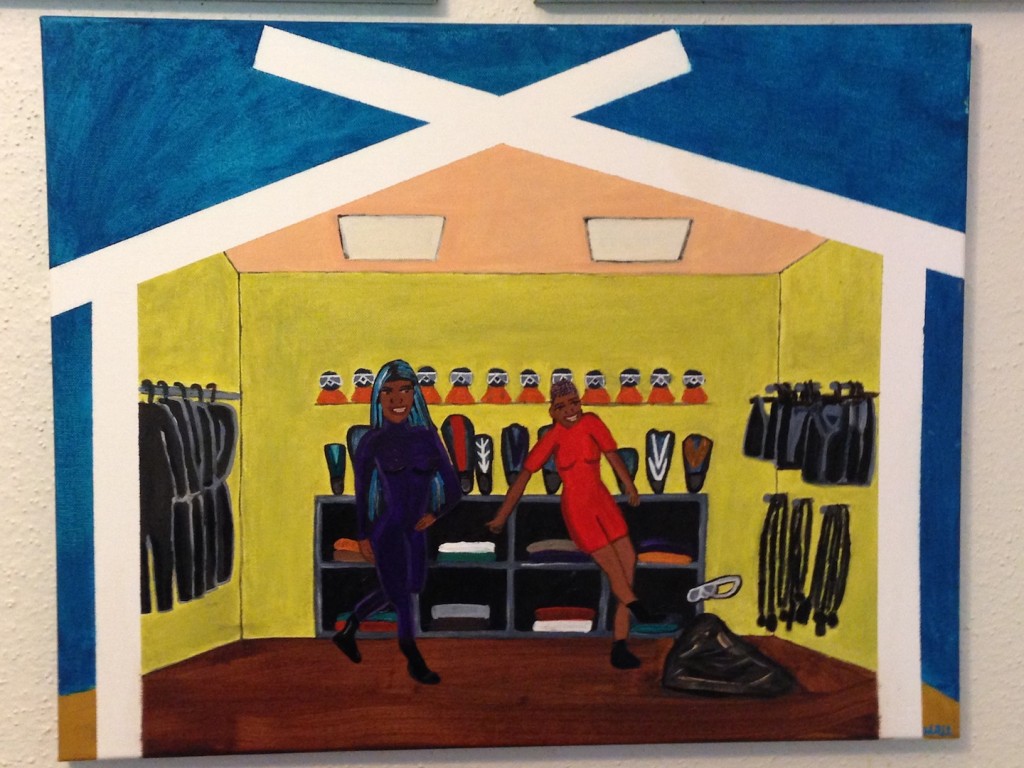
When I woke up on the first morning of my new refugee status, an email brightened my day.
Out of nowhere, a buyer was interested in the Chapter 10 painting. My spirits soared. Selling one painting would help make up for a week’s worth of pay I’d missed due to not being able to work.
The buyer messaged me via the Etsy platform, asking for my email address. Under normal circumstances, this should have been a red flag. Not that my personal email address was sensitive information, but logically, if a buyer messaged me through the Etsy, why the need for my personal email address? Nonetheless, I was too excited not to accommodate the request.
The second red flag came in the email. The interested buyer, whose first name was the same as mine (nice touch, scammers!), spun this story that her uncle wanted to buy my painting as a surprise gift for his wife, but didn’t want to go through the Etsy platform. Instead, he’d send a check, which the niece would send via certified mail. She verified the cost of the painting at least twice, which included shipping, and informed me where to mail the painting. She then requested my mailing address. Then, in what seemed to be an after thought, she also requested my phone number in another email just to clarify the price again, so she could text me when to expect the check.
Again, I wasn’t thinking straight. I found nothing wrong with sharing things I would’ve readily put on a business card. And yet, the entire transaction could have taken place via Etsy without all the back and forth.
In the meantime, I googled the West Virginian address that she’d given me. When Google couldn’t find the exact location, I asked her to double check the address and send me her phone number, so I’d know it when she’d text.
When I excitedly told a friend about my impending sale, he wrote me a reality check: in the 12 years he’d sold things online, he’d never been offered a check that wasn’t fraudulent.
The next day, I returned to my apartment. As I picked up my life from where I’d left off, I braced myself for the fact that I was being scammed.
A few days later, the other shoe dropped. The buyer informed me that, despite her confirmation of the price several times, her uncle’s financier had made the check out for more than the agreed upon price. So, she urged me to deposit the check, and mail the painting along with a refund of the difference.
Whoomp, there it was! I’d already known that it was bullshit, but hell, I’d been quarantined for nearly a year and needed some entertainment. I responded that as soon as I received the check, we’d move forward from there.
Days later, “she” texted me that I’d receive the certified envelope with the check that day. Again, “she” encouraged me to quickly deposit the check, send her the difference and mail the painting.
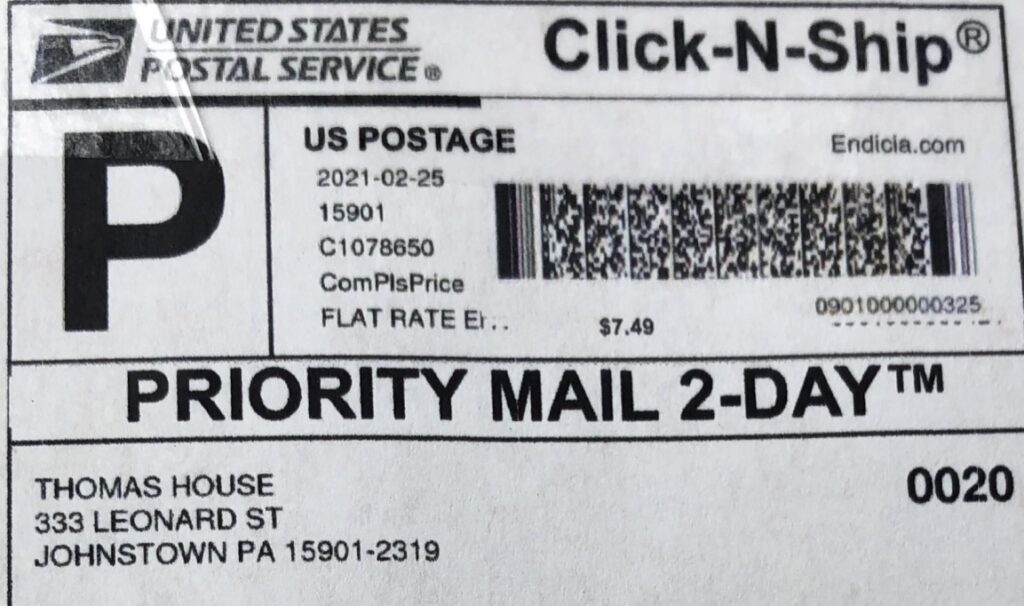
For shit and giggles, I checked my mailbox.
Sure enough, the envelope was there. I had no idea who “Thomas House” was. It could have been the uncle. Even so, the return address was in Pennsylvania yet the painting was to be mailed to some West Virginian place that Google couldn’t find, but there was more.
I laughed my ass off when I saw the check amount, but doesn’t the check itself look legit, sight on seen? I mean, despite the fact that “she” now spelled “Teresa” with an H and had a different surname.
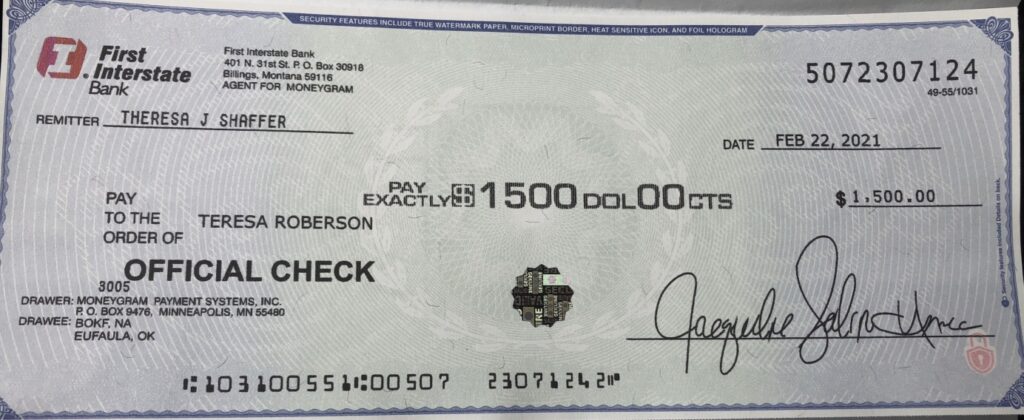
The “bank” that issued the check was located in Montana.
I looked up the bank address. Again, Google couldn’t find an exact location, but I called the nearest branch to the printed address. I spoke with their customer service representative who verified that the listed routing number, which is unique for each bank, wasn’t theirs.
As I spoke with the customer service rep, she assured me that scammers were really good at making their checks look official, complete with hologram stickers and watermarks. She also said that when she bought things on Etsy, she paid through the platform without any backstory. At that point, I told her the name of my Etsy shop, TYRCreations, which she later checked out and liked.
(For the record, when I later googled the routing number, 103100551, the first thing that popped up was a counterfeit check scam from a Pennsylvanian bank, Hatboro Federal Savings, back in 2018.)
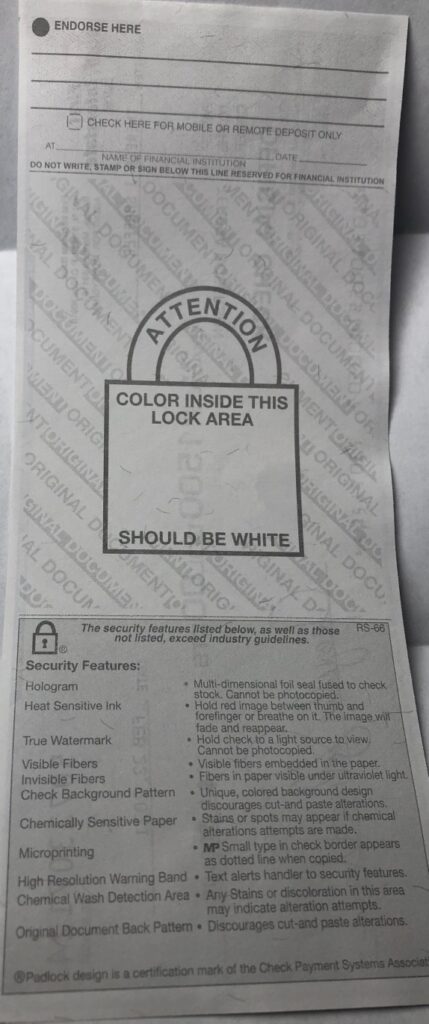
As I talked with the customer service rep through my hands-free headset, I drove to my bank.
I dreamed about the bank stamping the check with a big red “VOID” or “FRAUD” or some equally menacing thing.
I explained the situation to the teller. She also confirmed that the routing number didn’t match the listed bank. Then she pointed out that the two addresses on the check should match.
Even though my bank had no fun stamp because they usually throw fake checks away or shred them, I borrowed her red pen to write “VOID” on it myself. Then I took a picture of the check.
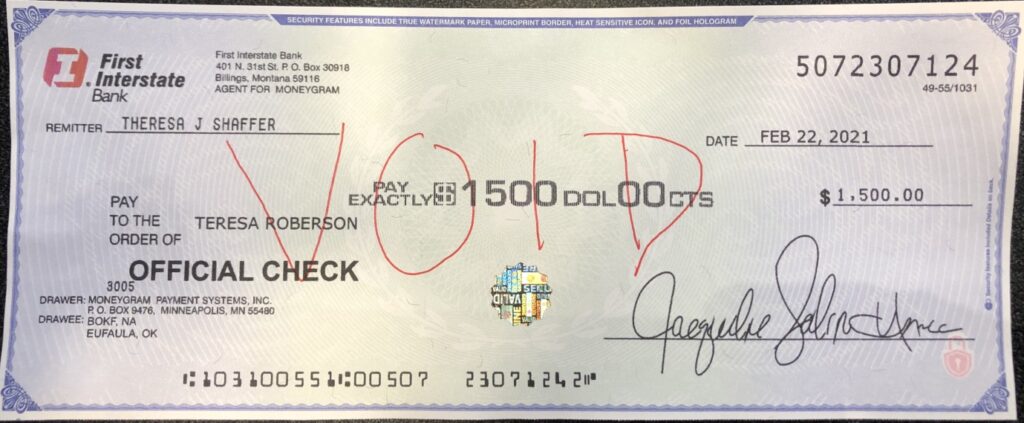
I texted the picture to the scammer buyer, stating that when I attempted to deposit it, the routing number didn’t match the bank, but if they were still interested in the painting, then make a payment through the Etsy platform.
I’m one of the few people who turns off her cell before going to bed. When I turned it on the next morning, the scammer had texted, “Hello, Teresa.” Really? So cool to the fact that the alleged uncle’s financier had sent me a hot check? I deleted the text without answering.
The next day, I got an email about whether I’d received the text. I deleted that too. I’m sure they wanted to maintain the ruse by telling me that they could get the money to me sooner if I’d give them my account information. I didn’t give them the opportunity.
Those scammers had probably watched the news, saw how the snowstorms rocked the vulnerable Texas electrical grid, cruised Etsy to find some Texas sellers, figuring that we’d be too stressed to think straight, and cast a net.
The morals of the story: never accept checks from strangers and use the Etsy payment platform since that’s what it’s there for.

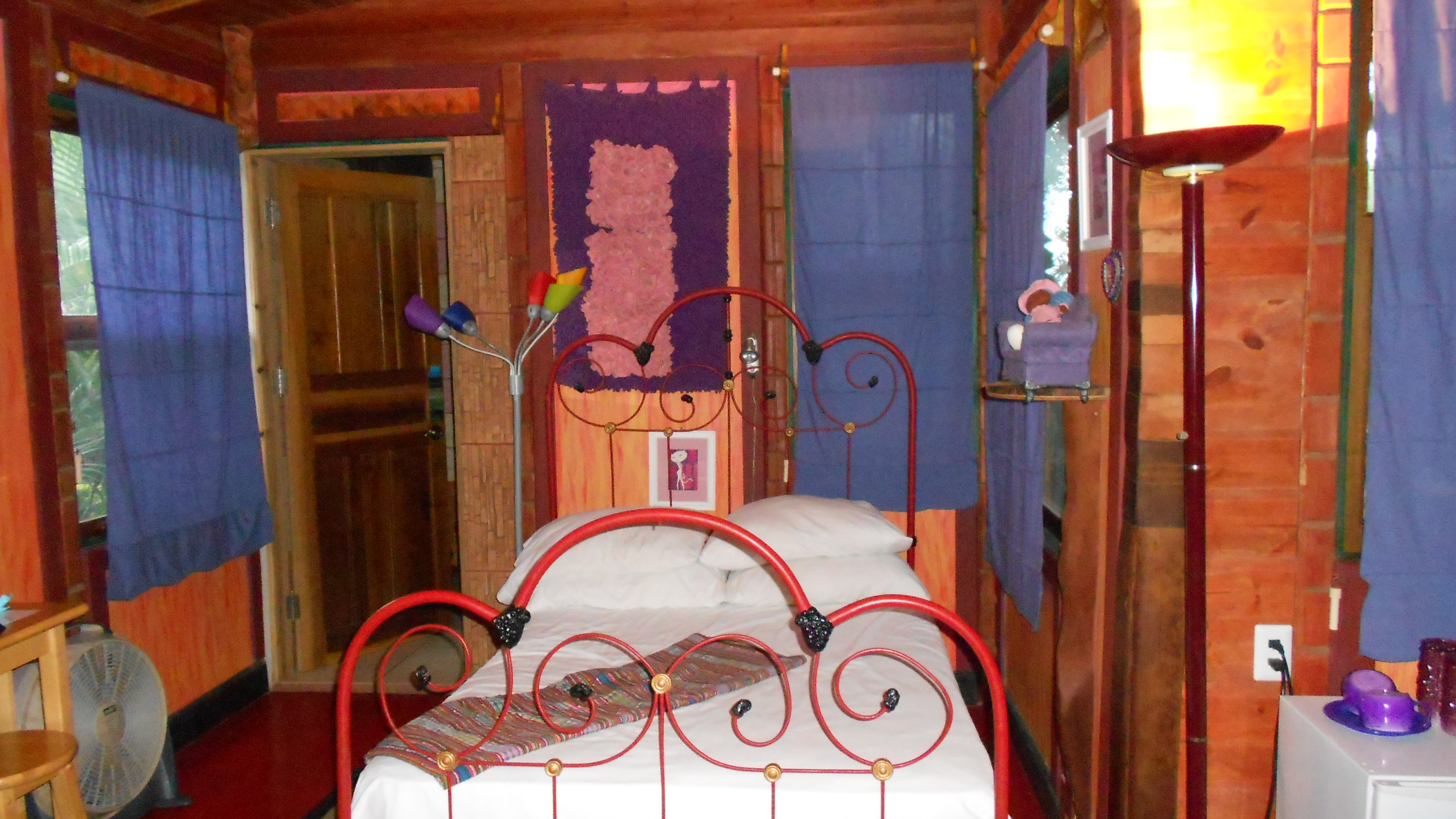
3 Responses to Opportunistic Parasites